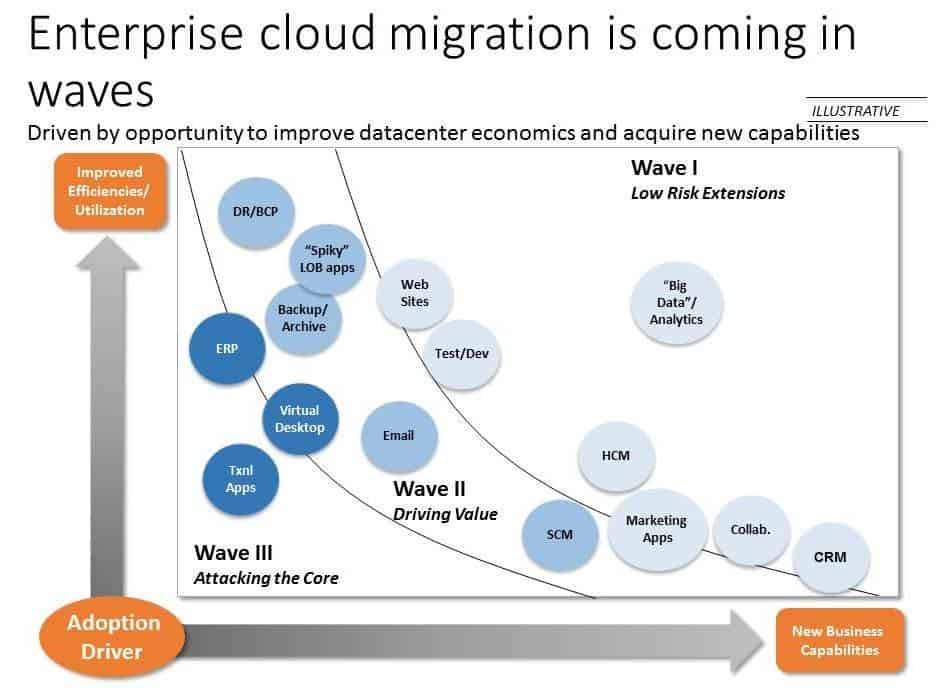January 27, 2014
You’ve heard it … read it in the news … and probably even participated in the discussions about it. “It” is the impact of the cloud model on the third-party service provider marketplace. What are the cloud’s potential disruptive effects? As the cloud and outsourcing meet head on, will the cloud make hiccups or ripples, or will it become a crushing force? How big a threat is cloud to the outsourcing space?
To answer those questions, I think we have to pull apart the services spaces, as the cloud’s impact will differ widely in various areas.
Let’s start with where cloud has the highest potential for disruptive impact.
Impact on IT infrastructure services
The cloud model’s impact on the traditional IT infrastructure outsourcing space has been modest to date and, surprisingly, has not had as strong an impact in disintermediating the existing marketplace as RIMO (Remote Infrastructure Management Outsourcing) had.
Although the impact to date has been modest, the cloud model has a very high potential to disintermediate business in this space and is in a position to drive increased run-off out of traditional infrastructure models.
Threat profile — High. I believe the cloud’s disruptive impact in this area is a question of when, not if.
Impact on the applications space
Here the story is quite different. Unlike the infrastructure space where cloud is poised to take away existing revenues, in the applications space it has at least as many positive impacts as negative. In fact it has the potential to be a growth engine.
As companies prepare to evolve and move into the as-a-service world or migrate their applications to the cloud infrastructure models, the substantial amount of SI and applications effort to transition into the new models will create growth in the outsourcing marketplace.
However, there is a caution sign. The kind of work best suited for the cloud model often goes to new market entrants rather than the traditional players. We’ve blogged before about the shift of decision rights into the business stakeholders’ realm rather than the CIO, and this is driving growth in the cloud market. So there are some issues associated with positioning, but it’s driving growth in the overall marketplace.
Threat profile — Initially modest to high disruptive impact for traditional players. But as the traditional providers resolve their positioning issues with the new consumerized decision-making realm in clients’ businesses, the cloud should have a net positive impact on the outsourcing providers’ growth, rather than a disruptive impact.
Impact on the BPO space
On the BPO side, the cloud model is even more immature and it’s less clear what eventual impact it will have. We certainly see cloud engines being incorporated into the BPO or BPaaS model. But here it’s more of a change in one of the component parts, rather than affecting the overall business model.
Threat profile — Modest to flat impact.
Our overall assessment is that the cloud’s clout to disrupt the existing marketplace in the outsourcing world is modest to high — but the changes will carry both negative and positive consequences.


